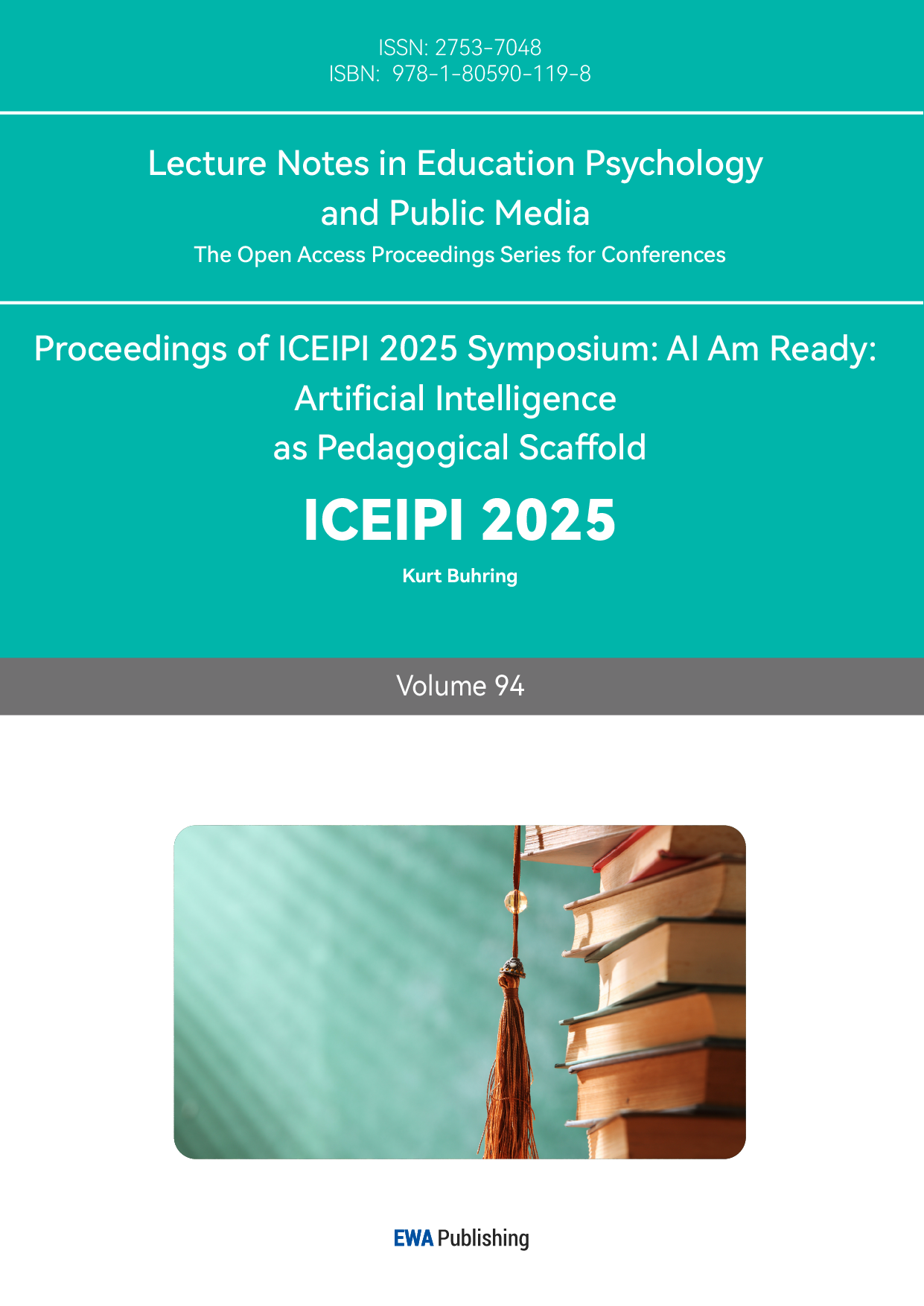References
[1]. Radford, A., Wu, J., Child, R., Luan, D., Amodei, D., & Sutskever, I. (2019). Language Models are Unsupervised Multitask Learners. OpenAI Blog, 1(8), 9.
[2]. Lee, T. K. (2024). Artificial Intelligence and Posthumanist Translation: Chatgpt Versus the Translator. Applied Linguistics Review, 15(6), 2351-2372.
[3]. Gao, R., Lin, Y., Zhao, N., & Cai, Z. G. (2024). Machine Translation of Chinese Classical Poetry: A Comparison among ChatGPT, Google Translate, and DeepL Translator. Humanities and Social Sciences Communications, 11(1), 1-10.
[4]. Ali, M. A. (2020). Quality and Machine Translation: An Evaluation of Online Machine Translation of English into Arabic Texts. Open Journal of Modern Linguistics, 10(5), 524-548.
[5]. Doherty, S. (2016). The Impact of Translation Technologies on the Process and Product of Translation. International Journal of Communication, 10, 23.
[6]. White, J. (1995). Approaches to Black-Box Machine Translation Evaluation. In Proceedings of MT Summit, 386-393.
[7]. Holliday, A. (2012). Intercultural Communication an Advanced Resource Book for Students. In Intercultural Communication. Routledge,.
[8]. Scollon, R., Scollon, S. W., & Jones, R. H. (2011). Intercultural Communication: A Discourse Approach. John Wiley & Sons.
[9]. Sarwari, A. Q., Javed, M. N., Mohd Adnan, H., & Abdul Wahab, M. N. (2024). Assessment of the Impacts of Artificial Intelligence (AI) on Intercultural Communication among Postgraduate Students in a Multicultural University Environment. Scientific Reports, 14(1), 13849.
[10]. Khasawneh, M. A. S. (2023). The Potential of AI in Facilitating Cross-Cultural Communication Through Translation. Journal of Namibian Studies: History Politics Culture, 37, 107-130.
Cite this article
Wang,S. (2025). The Role of AI in Intercultural Academic Understanding and Communication. Lecture Notes in Education Psychology and Public Media,94,33-37.
Data availability
The datasets used and/or analyzed during the current study will be available from the authors upon reasonable request.
Disclaimer/Publisher's Note
The statements, opinions and data contained in all publications are solely those of the individual author(s) and contributor(s) and not of EWA Publishing and/or the editor(s). EWA Publishing and/or the editor(s) disclaim responsibility for any injury to people or property resulting from any ideas, methods, instructions or products referred to in the content.
About volume
Volume title: Proceedings of ICEIPI 2025 Symposium: AI Am Ready: Artificial Intelligence as Pedagogical Scaffold
© 2024 by the author(s). Licensee EWA Publishing, Oxford, UK. This article is an open access article distributed under the terms and
conditions of the Creative Commons Attribution (CC BY) license. Authors who
publish this series agree to the following terms:
1. Authors retain copyright and grant the series right of first publication with the work simultaneously licensed under a Creative Commons
Attribution License that allows others to share the work with an acknowledgment of the work's authorship and initial publication in this
series.
2. Authors are able to enter into separate, additional contractual arrangements for the non-exclusive distribution of the series's published
version of the work (e.g., post it to an institutional repository or publish it in a book), with an acknowledgment of its initial
publication in this series.
3. Authors are permitted and encouraged to post their work online (e.g., in institutional repositories or on their website) prior to and
during the submission process, as it can lead to productive exchanges, as well as earlier and greater citation of published work (See
Open access policy for details).
References
[1]. Radford, A., Wu, J., Child, R., Luan, D., Amodei, D., & Sutskever, I. (2019). Language Models are Unsupervised Multitask Learners. OpenAI Blog, 1(8), 9.
[2]. Lee, T. K. (2024). Artificial Intelligence and Posthumanist Translation: Chatgpt Versus the Translator. Applied Linguistics Review, 15(6), 2351-2372.
[3]. Gao, R., Lin, Y., Zhao, N., & Cai, Z. G. (2024). Machine Translation of Chinese Classical Poetry: A Comparison among ChatGPT, Google Translate, and DeepL Translator. Humanities and Social Sciences Communications, 11(1), 1-10.
[4]. Ali, M. A. (2020). Quality and Machine Translation: An Evaluation of Online Machine Translation of English into Arabic Texts. Open Journal of Modern Linguistics, 10(5), 524-548.
[5]. Doherty, S. (2016). The Impact of Translation Technologies on the Process and Product of Translation. International Journal of Communication, 10, 23.
[6]. White, J. (1995). Approaches to Black-Box Machine Translation Evaluation. In Proceedings of MT Summit, 386-393.
[7]. Holliday, A. (2012). Intercultural Communication an Advanced Resource Book for Students. In Intercultural Communication. Routledge,.
[8]. Scollon, R., Scollon, S. W., & Jones, R. H. (2011). Intercultural Communication: A Discourse Approach. John Wiley & Sons.
[9]. Sarwari, A. Q., Javed, M. N., Mohd Adnan, H., & Abdul Wahab, M. N. (2024). Assessment of the Impacts of Artificial Intelligence (AI) on Intercultural Communication among Postgraduate Students in a Multicultural University Environment. Scientific Reports, 14(1), 13849.
[10]. Khasawneh, M. A. S. (2023). The Potential of AI in Facilitating Cross-Cultural Communication Through Translation. Journal of Namibian Studies: History Politics Culture, 37, 107-130.









